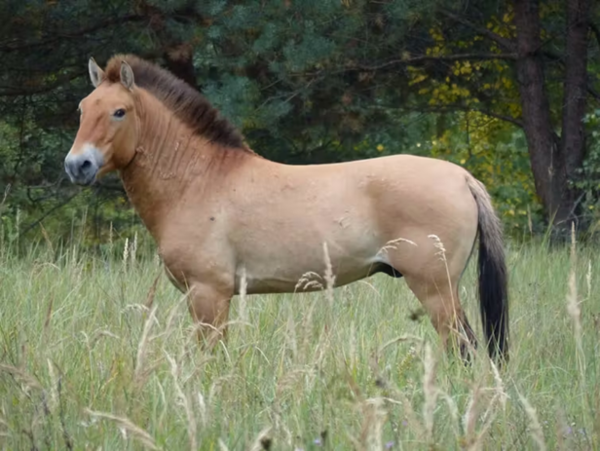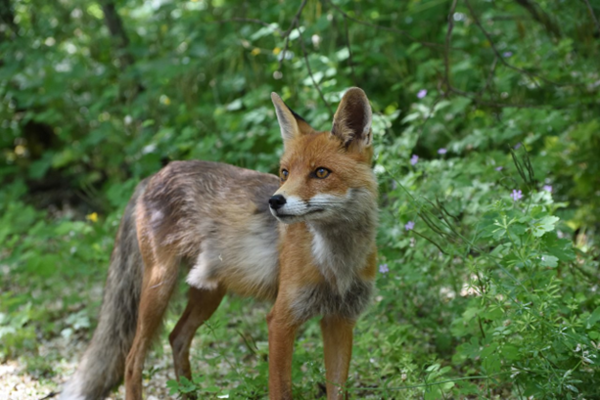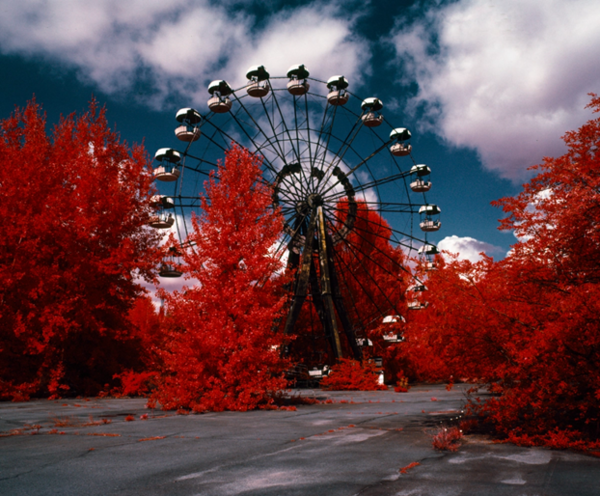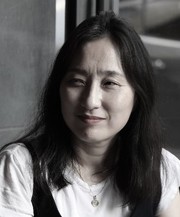The Silence of Autumn, and the Forest Reborn: Nature’s Will in Chornobyl

[아츠앤컬쳐] 우크라이나 북부, 키이우에서 북쪽으로 약 100km 떨어진 지점. 1986년 4월 26일, 세계 역사상 최악의 원자력 재해가 일어난 그 장소. 당시 인류는 통제 불가능한 기술의 파괴력을 마주했고, 그 여파는 국경을 넘어 전 유럽에까지 퍼져나갔다. 그러나 그로부터 수십 년이 흐른 지금, 체르노빌을 바라보는 방식에는 미묘한 전환이 일어나고 있다. 그것은 단지 폐허의 상징이 아니라, 자연의 경이로운 복원력과 시간의 마법이 만들어낸 또 하나의 새로운 서사이다.
11월의 체르노빌 숲은 놀라울 정도로 아름답다. 대기를 감싼 얇은 안개, 은빛으로 반짝이는 자작나무잎, 울긋불긋 물든 단풍, 그리고 바람 따라 낙엽이 흩날리는 풍경은, 그 어떤 회색빛 도시의 공원보다도 더 선명하고 생명력 넘친다. 인간이 철수한 이후, 수십 년 동안의 방치가 곧 자연에게는 회복의 시간이 되었다. 과도한 개발, 삼림 벌채, 교란된 생태계가 아닌, 오히려 인간이 완전히 발을 뗀 그 틈에서 숲은 스스로의 속도로 자라나기 시작했다.

멧돼지 떼가 낙엽을 헤집고 지나가고, 고라니와 수달, 까마귀, 너구리, 늑대까지. 이곳은 이제 유럽에서도 보기 드문 생물다양성의 보고로 떠오르고 있다. 한때 생명의 터전을 파괴했던 그 땅이, 아이러니하게도 다시 생명의 안식처가 되어가고 있다.
2016년, 우크라이나 정부는 체르노빌과 그 인근 지역을 ‘체르노빌 방사능 및 생태 생물권 보호구역’으로 공식 지정했다. 면적은 약 2,200㎢로 서울의 35배에 해당하며, 유럽 최대 규모의 생태 복원 구역 중 하나다.
지금 이 보호구역에는 수십 명의 생태학자와 연구자들이 상주하며 드론, 무인 센서, 위성 영상 등을 통해 동물들의 움직임, 토양 변화, 식생 분포를 추적하고 있다. 멸종위기종인 프셰발스키 말이 인위적으로 방사된 이후 지금까지 100마리 이상이 자생 개체로 살아가고 있으며, 회색늑대의 개체 수는 우크라이나 전체 평균보다 높게 관찰되고 있다. 동유럽의 전통 숲 생태계를 보전하는 ‘실험실’로서, 체르노빌은 전 세계 환경학계의 주목을 받고 있다.

하지만 여느 공원과 달리 일부 허가된 탐방 코스를 제외하면 관광객의 출입은 엄격히 통제되고 여전히 접근할 수 없다. 방사능은 완전히 사라진 것이 아니다. 그러나 생명체는 그 경계를 회피하거나, 적응하거나, 공존하는 방법을 찾아낸다. 바로 이 점에서 체르노빌은 ‘비극 이후의 진화’라는 희귀한 풍경을 찾아볼 수 있다…
11월 체르노빌에서 마주한 가을은 인간의 흔적이 사라진 도시, 붕괴된 콘크리트 건물, 녹슨 가로등 사이로 자작나무는 고요하게 자라고, 여우는 길을 건너며 이 폐허의 주인이 누구인지 새롭게 정의한다.
우리는 이 풍경에서 ‘인간 없는 자연은 어떻게 변화하는가? 기술이 실패한 공간에서, 생태계는 어떤 방식으로 균형을 되찾는가? 그리고 우리는 이 침묵의 생태계를 어떻게 마주해야 하는가? ’하는 물음일 것이다.
체르노빌의 가을은 조용하지만 결코 비어 있지 않다. 그것은 오히려 더 꽉 찬 침묵의 메시지다. 인간의 목소리가 사라진 자리에 새와 바람과 풀잎의 소리가 돌아왔고, 그로 인해 우리는 역설적으로 ‘더 깊은 생명’을 느낄 수 있다.

The Silence of Autumn, and the Forest Reborn
: Nature’s Will in Chornobyl
About 100 kilometers north of Kyiv, in northern Ukraine, lies a place that once shook the world. On April 26, 1986, one of the worst nuclear disasters in human history unfolded there. The power of uncontrollable technology became terrifyingly visible, and the impact spread far beyond borders—across Europe and deep into collective memory. But decades later, our perception of Chornobyl is beginning to shift. It is no longer just a symbol of catastrophe, but also a testament to nature’s extraordinary power of recovery, and to the quiet magic of time itself.
In November, the forests of Chornobyl are strikingly beautiful. Thin mist hangs in the air, silver birch leaves shimmer under muted light, and the foliage glows in hues of red and gold, scattering gently in the wind. This place is no longer a city. It is a space left untouched for decades, a space where absence became opportunity—for nature to heal. In the absence of human intervention, without deforestation, construction, or disruption, the forest began to grow at its own pace, reclaiming what was once lost.
Wild boars dig through fallen leaves, deer and otters roam freely, crows and raccoons pass silently through, and wolves—once rarely seen—have returned. In a twist of fate, the very land once stripped of life has become a sanctuary for it. Today, it is one of the most biodiverse areas in Europe.

In 2016, the Ukrainian government officially designated the region as the Chornobyl Radiation and Ecological Biosphere Reserve. The protected area spans approximately 2,200 square kilometers—about 35 times the size of Seoul—and is now one of the largest ecological restoration zones in Europe.
But this reserve is not merely an “abandoned place.” Dozens of ecologists and researchers live and work here, monitoring the forest through drones, sensors, and satellite imagery. Since the reintroduction of the endangered Przewalski’s horse, over a hundred individuals now roam freely in the wild. The gray wolf population is flourishing, exceeding national averages. The reserve has become a living laboratory, preserving one of Eastern Europe’s last intact forest ecosystems—and drawing the attention of scientists from around the world.
Yet, unlike public parks, Chornobyl remains off-limits to most visitors. Aside from a few approved trails, the majority of the reserve remains restricted. Radiation has not disappeared. But life has returned. Nature does not wait for perfect conditions—it adapts, avoids, and finds a way to exist. This is where Chornobyl offers us a glimpse into a rare phenomenon: evolution after disaster.
Autumn is a season of harvesting, of letting go, and of quiet endings. In Chornobyl, this season resonates even more deeply. Amid the ruins of buildings, overgrown streets, and rusted lampposts, birch trees grow quietly, and foxes cross forgotten roads, redefining who truly belongs here.
What we read in this landscape is not just a story of nature’s recovery. It is a set of questions: How does nature change without us? How does an ecosystem rebalance itself after technology has failed? And how should we meet this silent, recovering world?
The autumn of Chornobyl is quiet, but not empty. It is full of meaning. Where human voices once echoed, birds, wind, and the rustle of leaves now speak. And through their sound, we are invited to feel something deeper—a sense of life that persists, patiently and powerfully, beyond us.

글 ㅣ 박수희
(주)구라파랩 대표
해외브랜드 전시 플랫폼 및 마케팅 컨설팅
해외브랜드 B2B & B2C 전문

